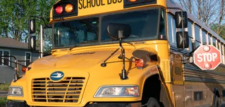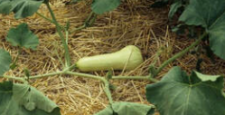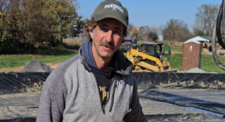During the April 2023 survey, 2,857 buses from 223 participating Kansas school districts reported 676 stop arm violations.
That was down from the recent high of 1,040 stop arm violations in 2019, but that year also had far more buses participating and reporting violations.
The 2023 count included 18 cases where drivers passed on the right side of the bus.
“Twenty-eight years as a state trooper I enforced stop arm violations,” Dreiling said. “However, until I took this job, I had no idea that we had vehicles passing school buses on the right side.”
In 2022, the single-day survey recorded 46 times that drivers passed on the right side of a stopped bus.
“It just scares us half to death that something really bad (could happen), because that’s where all the kids are normally before they board the bus,” Dreiling said.
New numbers are not yet available for the 2024 survey, which was conducted Wednesday.
Education officials watch videos of stop arm violations
At its March and April meets, the state board watched several videos of stop arm violations.
Dreiling showed a video from Minnesota where a semi passed on the shoulder to the right as a bus stopped outside a house. He said a judge sentenced the truck driver to a year in jail.
“This is a really, really serious subject,” said Hill, the representative from Abilene. “And when you saw that video of the semi blowing by, you realize that that was within a few inches of taking somebody’s life.”
In Kansas, similar bus videos can’t be used to fine or prosecute drivers because state law generally requires law enforcement to personally observe a violation. But buses can still record videos.
At the April meeting, Dreiling showed a Sept. 13, 2023, video from Shawnee Heights USD 450 where a bus stops on S.E. 29th Street just west of S.E. Croco Road.
A Ford F-150 then passes the bus as the driver is stopping, its lights already activated but the stop arm not quite outstretched yet. Then, more vehicles continue to pass going in the opposite direction.
In that area, S.E. 29th Street has four lanes of travel plus a turning lane. In that situation, under Kansas law, it is illegal for either side of the road to pass a stopped school bus.
An Aug. 25, 2023, video from Southeast of Saline USD 306 shows a pickup initially stop for the bus with its stop arm out and lights flashing. After about five seconds, the driver proceeds to pass anyway.
“He gets tired of waiting, or whatever,” Dreiling said.
Dreiling also showed three videos from Easton USD 449.
One was a Nov. 14, 2023, video in Easton shows children coming out of a house, about to cross a two-lane highway to get on a school bus. Then, a pickup passes two school buses — which was illegal because at least one school bus had its stop arm out and because the highway had a double yellow line.
Leavenworth County sheriff’s deputy Justin Green, who is the Easton school resource officer, has found a way to issue citations to violators in some cases. He said the county attorney allows the citations, “As long as I have my body camera on and I get an admission of guilt.”
In that November case, Green used the videos to find out who the driver was, called him while recording with his body camera and the driver admitted to breaking the law.
“His excuse was he was about to run out of gas, so that’s why he passed,” Green said.
He issued three citations to that driver, one for each of the buses he passed and one for passing in a no-passing zone.
“Eventually, they’re going to get smart to it and stop admitting guilt,” Green said.
‘It says stop for a reason’
“We always tell the schools the safety of the student is the most important thing,” Dreiling said. “They’re transporting our most important resource we have out there, a special cargo, our kids. That’s why we always remind them, it’s always about the kids and the safety of the kids riding the bus.”
Edgar Arroyo, a school bus driver and trainer at Kansas Central Bus Service, told The Capital-Journal that “part of our training is to always make sure that students are OK and there’s no threat around them before they load.”
As a driver whose Sheldon Head Start route has several stops on Gage and Fairlawn, “I do see that often” where traffic illegally passes his stopped school bus. He likes the idea of a law allowing cameras on buses to allow police to fine violators.
“That’d be awesome,” he said. “Because that way, we know that there’s something backing us up, and in case something happens.”
He also thinks state regulatory changes to bus routes and loading zones could be effective, especially if it would mean picking up and dropping off kids closer to their home.
Zytaya Bush, who walked with her son to a southeast Topeka bus stop, also like the camera idea.
“I think that the traffic cameras will be a great idea for the safety of the kids, the bus and everyone around,” Bush said. “Because when cars do not stop when the buses are stopping, it creates a safety hazard.”
“I’ve seen cars pass by buses, I have seen it when the stop sign is out,” Bush added, urging drivers who are in a rush to instead leave earlier. “It says stop for reason.”
As reported in the Topeka Capital Journal











